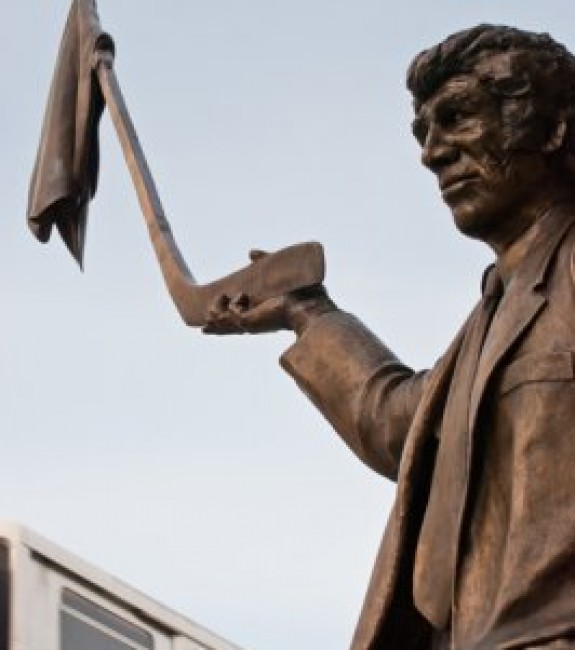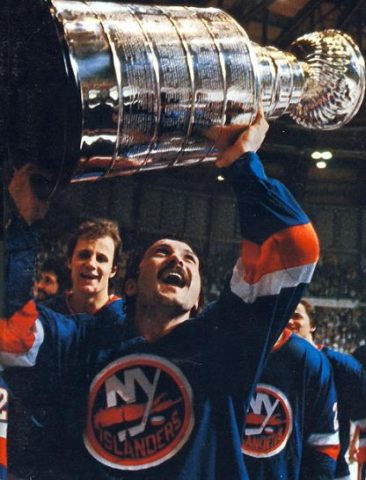The Vancouver Canucks have had many great players in their history. From their first captain Orland Kurtenbach to Trevor Linden, Vancouver has been lucky to see many amazing talents grace the ice. Out of all these greats, four players have been rewarded with their numbers being hung in the rafters, and seven more are in the team’s Ring of Honor.
Related: Longest Stanley Cup Droughts
However, these 11 players could not encompass everyone, and many great players have just not quite made the cut. One player who was on that path was Darcy Rota, a winger with a knack for finding the back of the net, whose career was cut short due to injury.
Rota’s Journey to the Canucks
Rota grew up a fan of the Canucks as he played minor hockey in nearby Prince George, where he eventually was inducted into the Prince George Sports Hall of Fame. Rota’s success in junior hockey with the Edmonton Oil Kings, then playing in the WCHL, led to him being selected 13th by the Chicago Blackhawks in the 1973 NHL Draft. Rota went on to be known as a gritty two-way producer for the Blackhawks as he had multiple 20-goal seasons, yet he never quite lived up to the offensive potential he had once shown in junior.

After six seasons on the Blackhawks, Rota was traded to the Atlanta Flames in a large deal which included Tom Lysiak, the player that was drafted 11 picks before Rota in the 1973 NHL Draft. Rota never appeared in a full season for the Flames before he was traded once again to Vancouver, where he debuted at the end of the 1979-80 season.
Rota Returns to British Columbia
Rota was back in his native British Columbia and during his first full season for the Canucks, he scored 25 goals while recording 124 penalty minutes. The Canucks were a young franchise, but one whose fortunes were about to change as they were accumulating the players that would make up the core of their 1981-82 team, their most successful to date.
Related: 11 NHL Teams Without a Stanley Cup
In 1982, the Canucks had an up and down regular season where they finished below .500, but the turning point came when head coach Harry Neale was suspended 10 games for getting into an altercation with a fan during a game in Quebec City. Assistant coach Roger Neilson assumed the head coaching duties, known as “Captain Video” for the amount of film he watched, and after leading the team to a seven-game win streak, he was handed the job. Neilson became a beloved coach in Vancouver, and today his statue stands outside Rogers Arena.

The team rode this momentum heading into the playoffs, as they swept the Calgary Flames 3-0 in the first round before dispatching the Los Angeles Kings 4-1 in the next round. This set up a Conference Final matchup against Rota’s old team, the Blackhawks, for the right to represent the Western Conference in the Stanley Cup Final.
Conference Finals Against the Blackhawks: A Familiar Foe
The series against the Blackhawks was etched into Canucks lore, as it was the first time the franchise made it to the Stanley Cup Finals. Rota described the series as special for him because it was the place where his NHL career started and he had plenty of friends and family in the stands (from ‘Vancouver Canucks’ 1982: The miracle year in their own words’, Vancouver Sun, 05/18/12).
Game 1 went to double overtime where winger Jim Nill was the hero for the Canucks as they took a 1-0 series lead. Game 2 was one that will never be forgotten, as the Canucks fell behind early. Coach Neilson, feeling like the referees were not doing a good job being impartial, took a white towel and raised it into the air with a stick.
Returning to Vancouver for Game 3, the fans brought towels in droves and waved them in support of the team. The Canucks did not lose another game during the series as they advanced to face the mighty Islanders in the Cup Final. Today, many professional sports teams across all leagues wave towels at their games, but it was the Vancouver Canucks and Roger Neilson who started this great tradition.
It was Rota that scored in Game 5 to effectively end the Blackhawks hopes of a comeback. He said, “it was the biggest goal of my life, and I couldn’t stop jumping up and down… it was chilling” (from ‘Vancouver Canucks’ 1982: The miracle year in their own words’, Vancouver Sun, 05/18/12). The team of scrappy underdogs was on its way to face off against the juggernaut Islanders in the Final.
Related: Pavel Bure – A Tribute to the Russian Rocket
The Islanders had future Hall of Famers such as Denis Potvin, Bryan Trottier, and Mike Bossy on their team and were vying for their third title in a row. New York’s speed and skill proved to be too much for the scrappy Canucks to handle as the series was ended in four games.

Rota was a key contributor for the Canucks run as he had nine points and 54 penalty minutes in the 17 games. He used this strong play to carry momentum into the next season.
Rota’s Breakout Season
It was following this magical playoff run that Rota was placed on a line with Canucks legends Thomas Gradin and Stan Smyl. He thrived next to these two players as he broke the Canucks’ franchise record for goals with 42. The team was ecstatic that Rota had seemed to find the goalscoring prowess that he had once showed off in junior, yet this individual success did not translate to team success as the Canucks fell in the first round to the Flames.
Rota once again kept that momentum going during the following season, as he was in the midst of another great year when tragedy struck. He was playing so well that he was named to the All-Star Game, the first and only one of his career. However, late that season in a game against the Kings, Rota was checked by Jay Wells and suffered a neck injury. After having scored 73 points in the first 59 games of the season, the injury was a tough break for Rota, but being the warrior he is, he managed to return for the playoffs. That summer, Rota underwent fusion spinal surgery.
Rota attempted to make a comeback the next season but the injury made it impossible. While its tragic that a player just finding their stride had their career cut short, Rota is still very active today in the Vancouver community as he can often be seen performing various outreach activities. After his playing career, he stayed involved with the Canucks before eventually moving on to a variety of management positions with junior hockey teams. He will forever be remembered and revered in Vancouver as one of the core pieces that bought that 1982 team of underdogs right to the Stanley Cup Final and showed the league that the Canucks could contend.